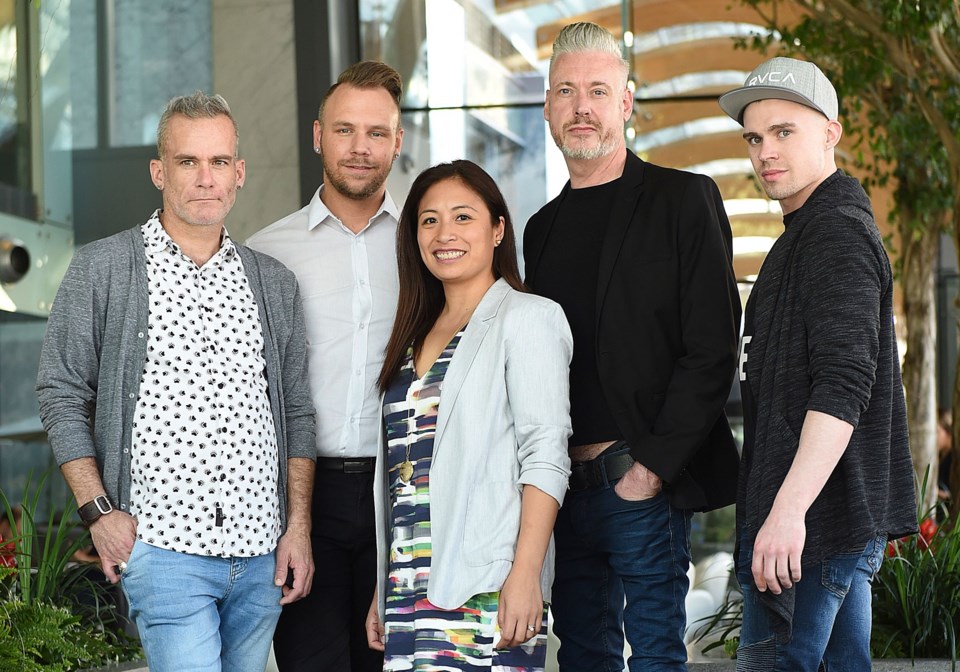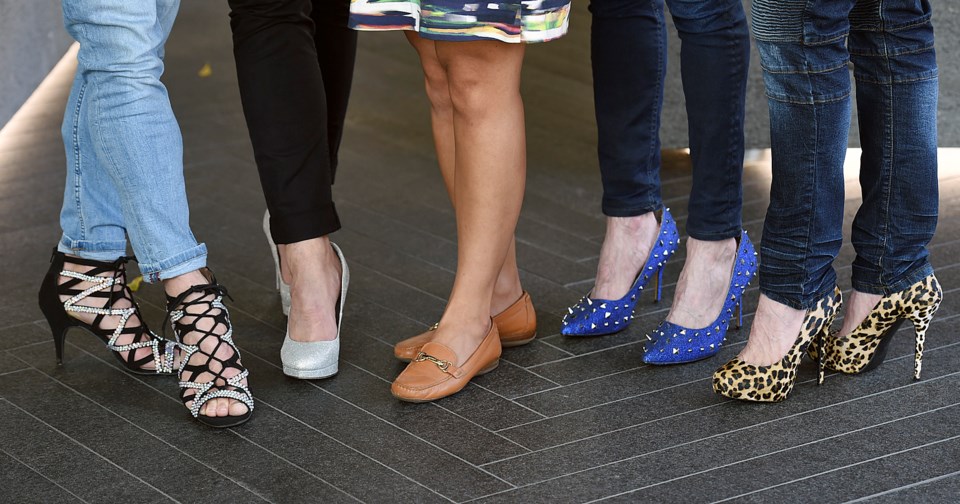From high fashion to the restaurant floor, high heels are an enduring symbol in North American society. For some, high heels are a personal choice – a frivolous accessory to be worn at will. For others, the shoes are viewed as a sign of oppression, or a step backwards in society. But, for a growing group of Vancouverites, high heels are also a powerful symbol of an ongoing and difficult personal journey.
The Foundation of Hope (FOH) is an organization that raises money for services and groups that help LGBTQ refugees arriving in Vancouver. As they get ready for their third annual walk-a-thon fundraiser, aptly called STRUT, on June 3, conversations about the controversy of using high heels as the symbol of the walk are circulating. Each year, the organization encourages, but does not require, participants to wear heels to the event, to represent the painful journey that LGBTQ refugees face when fleeing their countries and coming to Vancouver. According to the organizers, it also represents a resistance of gender norms, and a celebration of our freedoms here in Canada.
Chad Walters, board director of FOH, said that using high heels as a symbol creates important conversations about misogyny, gender perception, and internalized homophobia.
“We've had comments from [people] who push back on the idea of wearing heels, and that alone is exactly why we need to maintain it, because it causes conversations, and it causes retrospection and reflection, and it unpacks really important things that are secretly oppressing us today,” Walters said.
According to Walters, people opposed to the concept highlight the oppression and sexualization of women commonly associated with high heels, and the destabilization of the perception of masculinity that gay men have fought so hard for.
BC’s restaurant industry was recently at the centre of the high-heel controversy, when a private members bill was introduced in an effort to prohibit employers from requiring workers to wear heels on the job. Human rights laws in Canada already make it illegal for employers to have gender-specific dress codes; however, high heels are implicitly expected of female wait staff in many popular dining establishments provincially, and nationwide, and the law is largely unenforced. The bill did not have a chance to be passed before legislature was adjourned for the May 9 election, but it carried the support of Premier Christy Clark, and Labour Minister Shirley Bond.

Still, the pressure to wear heels in order to makes tips or look more “professional” persists, and many employers outside the restaurant industry also expect their female employees to wear heels.
Marley L., who works as a stripper in the Lower Mainland, said that high heels are required at her job no matter what, even though they can cause safety issues.
“It's not allowed at my club to wear anything other than heels, because that's what they think is sexy. It makes me more nervous for my stages because it's easier to trip in them,” she said. “It's unfair and I hope it changes in the future.”
In an ideal world, she said, she would be able to wear sneakers to work and still make tips and be considered sexy. “I wish it was optional because I'm not good at walking in them and I'd honestly feel sexier with a pair of converse on.”
With the one-mile walk-a-thon approaching, Chad Walters wants people to know that high heels are absolutely not required to participate. People are encouraged to wear fun footwear, or whatever they feel comfortable in.
An LGBTQ+ refugee we spoke with, who uses Foundation of Hope resources and wishes to remain anonymous, said that when he first moved to Vancouver from Lebanon, MOSAIC's “I belong” program, which meets monthly and has received funding from FOH, helped him find a community and feel safe. “Moving from your country to here is hard, so being with people who are in the same situation as you helps a lot,” he said.
He thinks that high heels are a powerful symbol for STRUT.
“For people who aren't refugees, or LGBT, it sounds a little bit maybe weird; but in fact, for a person like me, this is a huge thing. Organizations like the FOH give me great relief,” he said. “Walking a mile in high heels is very difficult, so it gives you some idea of how it is to be an LGBT person in countries where LGBT people are not welcome and forced to leave.”
During a speech Walters gave at Converge Con, a gathering about sexuality, relationships and activism that took place April 7-9, he discussed STRUT’s “high-heel heat” and weighed in on using the shoes as a symbol. “Being [LGBTQ] in persecutory nations is painful, challenging and sometimes even deadly. Stepping outside one’s socially conscripted gender roles can really make you feel psychologically uncomfortable […] which is what a false life of heterosexuality and forced cisgenderism feels like.
“We're walking together because here we are in this country, comfortable, privileged, we can love who we want to love,” he said. “So let's come together and walk for those that don't have that right.”
• STRUT Vancouver takes place June 3 at noon at Sunset Beach. To register, head to strutvancouver.ca
Correction: An earlier version of this story incorrectly identified the name and organizer of the 'I Belong' program. We regret the error.



